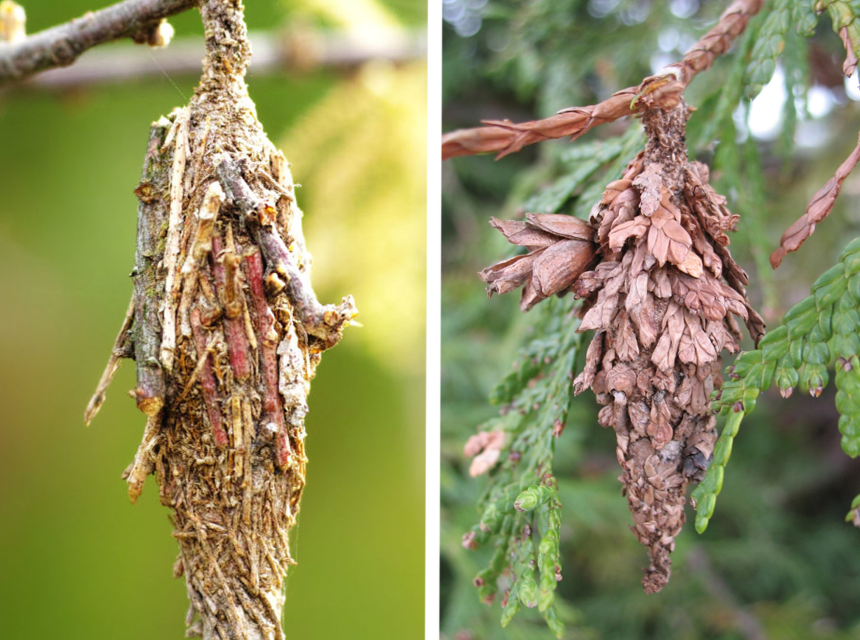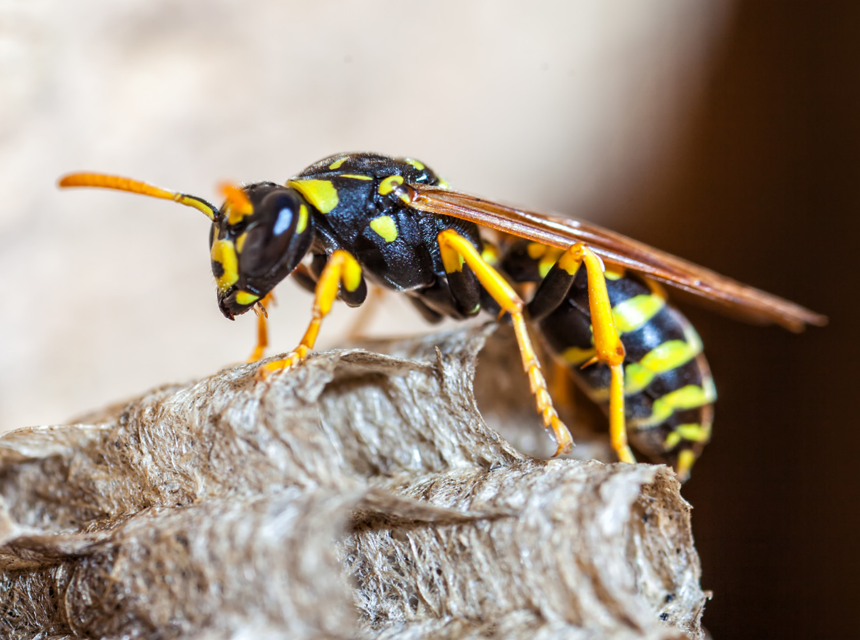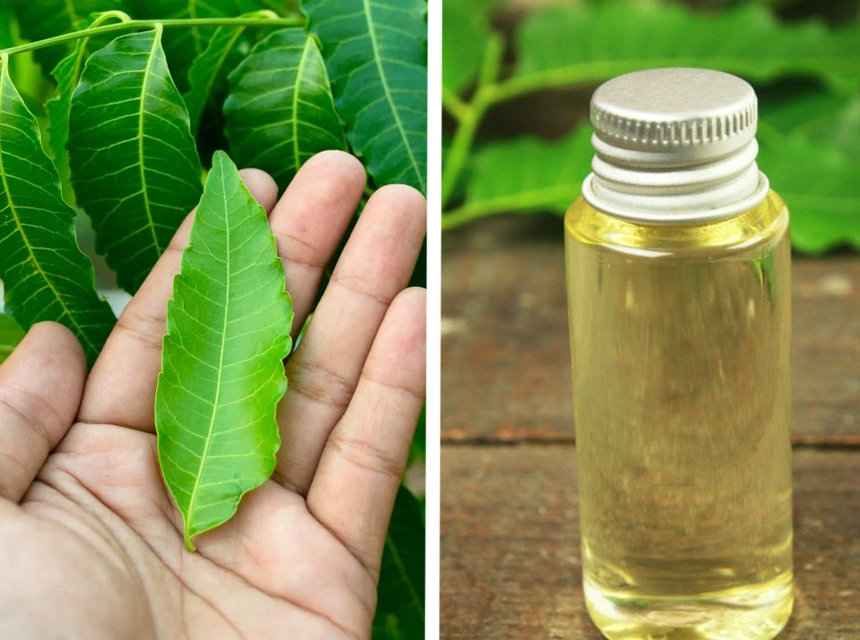

Worms are not to be underestimated. If every worm on the planet decided to surface at once, the resulting biomass would be thick enough to stack twenty feet in the air over the entire world.
That isn’t exactly the kind of fact you want to pull out at parties. But it is the kind of thing you want to keep in mind when you are thinking about your garden. This is because bagworms, a species of worm notorious for its infestations of suburban and rural homes.
But just how to get rid of bagworms? If you want to keep your plants, property, and people safe from these creepy crawlies, then the only real solution is to exterminate them.

Step one to dealing with bagworms is spotting them. There are a few telltale signs of bagworms, such as plants that look like they have been chewed through, yellowed plants, and browning plants.
Lots of people see the damage caused by bagworms and assume that it is mice. But mice don’t eat plants — or rather, if mice do eat plants, it’s practically by accident. But on top of the damage to plants, there are a few other things you should look out for to find bagworms.
The best way to describe bagworms is that they are evil-looking caterpillars. They are of a similar family, and in fact, have a similar lifecycle. This means they have a segmented body of soft flesh that is moved around on dozens of tiny legs. They are less “fuzzy” than some caterpillars, however.
Due to their dark color, they stick out when they are on the plants themselves. You will likely have to search for them if they are in the dirt though, as their dark flesh camouflages them.
Like most bugs, bagworms like moisture and warmth. It is why they enjoy the dirt and the shade of plants. But like other kinds of caterpillars specifically, bagworms have a special need to their habitat.
Bagworms will encase themselves in a cocoon much like how a caterpillar will. During this time, female bagworms will grow eggs, and male bagworms will turn into moths. These cocoons do not need to hang from a branch, though that is the bagworm’s preference. That means they like plants with strong stems and dirt with lots of moisture, hence why they are such garden pests.
Fortunately, there is not much complexity to the diet of bagworms. They eat the leaves off of plants. What kinds of leaves do they enjoy? What kind of plants do they seek out?
All kinds. It makes sense, they’re bugs. They literally don’t have brains with which to be picky. Just remember that shade is just as important as the sun in their survival, meaning they are going to prefer plants with lots of leaves, both for food and shelter.
The problem with bagworms is not that a bunch of them will devour your plants and produce. The problem with bagworms is that a small amount of them can multiply into huge numbers of them, which can then multiply into an even bigger problem.
Bagworms can lay between 500 and 1000 eggs during their lifetime, which will last a few seasons. If you catch them early, you can destroy the eggs before they hatch, or even catch the bagworms before they lay them. But if you see bagworms, assume there are eggs just to be safe.
Dealing with bagworms, unlike getting rid of is simple, but that does not mean it is easy. The biggest obstacle is being thorough. No matter what method you choose to use against these pests, you should be sure to do it at least a little more than you think you should do to be absolutely safe.
And, perhaps more importantly, you should use multiple methods to make sure they don’t learn to avoid your chosen approach of getting rid of them.
Of course, the most straightforward method of getting rid of bagworms is plucking them out by hand. They are not covered in poison or anything, but all the same, you should wear gloves while doing this.
Bagworms are oily and wriggly, and their legs have a texture like hair. It can make them uncomfortable to pick up for a lot of people, so gloves will help you keep friction and avoid feeling them in your hand. Once you remove them from your plants, put them in a garbage bag. The larger the better, as you do not want them finding their way out of a bag, which is more likely if it is a small bag.

No one likes this tip, but it is undeniably one of the more effective and low-maintenance ways of dealing with bagworms. Simply put, you use nature against nature. Place a sweet drink like lemonade or some honey near the places where the bagworms collate. Soon, their natural predators will come for them.
What is a bagworm’s natural predator? Wasps. You will use the sweet smell to attract wasps which will then feed on your bagworms. And because wasps have evolved to hunt bagworms, they will have a much easier time finding them than you will. Of course, then you have to deal with wasps. Knowing how to keep wasps away in advance will help you to eliminate them faster.
This is the best way to get rid of bagworms on trees because it keeps the wasps localized above you, and allows you to deal with the bagworms even though they are out of easy reach.
Imagine you drink a bunch of dish soap. It’s not going to kill you, but you obviously can’t digest it due to all of the synthetic cleaning chemicals inside it. Most life on earth needs water to survive, but bugs like bagworms are a lot more forgiving. They can digest water that is so dirty it would kill a human.
Soapy water, however, is not dirty. Those synthetic chemicals are even more damaging for a simple organism like a bagworm. The soap mixes with the water, thereby making it easier for the soap to mix with the water in the ground as well. Bacteria that the bagworms need to eat to survive get killed too.
Just remember to apply the water gently if you want your plants to survive. Because this can help clean surfaces as well, this is one of the best ways of getting rid of bagworms in your house.
There is a soil bacterium called Bacillus Thuringiensis. It is a bacterium you can get from your local farming goods store, as it is commonly used to kill bugs. Essentially, it is a bacterium that is mightier than the bugs that try to eat it and will kill them from the inside.
There is one important note, however, dumb as they are, bagworms will know to avoid this bacterium. But do you know who won’t? The hatching bagworm eggs. You have to apply this bacterium during the spawning season of the eggs. Do it too early, the bacterium will be dead before the babies can feed on it. Do it too late, the babies will lose their desperation and become smart enough to avoid it.
This means you will need a professional opinion on when bagworms plan to hatch that year.

This option is similar to using soapy water, except rather than poisoning the bagworms you’re suffocating them. Oil is thick and sticky, meaning that the bagworms will get coated in it and not be able to get the coat off of themselves. Their oxygen will get cut off, and they will eventually suffocate.
Even if they are partially covered in the oil, this will limit their breathing and result in them not being able to feed or sleep properly, killing them eventually. Just be sure to not kill your plants with the oil.
You have to be careful when you are doing this, as you are using poison to kill things, but it is also highly effective. And there are a lot of great products that will make it easy to remove bagworms from your garden without damaging your plants. The key is to get something that is easy to handle.
You can get a strong poison such as the Fertilome Insect Control if you have faith you will be accurate with it, or a light poison if you don’t trust yourself as much. Even a light poison like the Hi-Yield 55% Malathion Insecticide Spray will get rid of bagworms, as it will ward them off the plants and evergreens.
And should all else fail, you can always call someone who deals with bagworms professionally. As good as all these methods are, this is probably what you are going to want to do if you do not know how to get rid of bagworms on your outside walls or in the crawlspace beneath your house.
Poison is a sure thing, but it can be dangerous to apply. Experts know how to work it perfectly.
The best way to prevent bagworms is to stay vigilant. Bagworms might multiply in immense numbers, but they only migrate in small amounts. If you find one of their cocoons in your garden or up against your home (particularly nesting on the side of a tree), then all you need to do is pluck them off.
However, pesticides are known to result in bagworm problems. How is that? Don’t pesticides kill bugs? They do. But bagworms can evade pesticides in their cocoons. This means that your pesticides will kill all the competition and predators of bagworms, leaving the habitat for them to take.
Cut down on the pesticides and let bagworms’ predators flourish.
How to get rid of caterpillars is basically similar to how to get rid of bagworms, and webworms are about the same too. However, while the “what” to do is the same, the “when” is different.
Bagworms lay eggs in spring, hatch in summer, migrate in the fall, then hibernate during the winter. This is slightly different from caterpillars, which lay eggs in the summer, and webworms, which lay eggs in the fall. They are biologically almost identical, but the differences in seasons mean a lot.
They can survive best at different temperatures and handle different amounts of water. Caterpillars are accustomed to warmer, dryer conditions, and need less water. Webworms, meanwhile, will rarely nest anywhere besides the sides of trees due to their large water consumption.
Bagworms are simple creatures. They want to nest and eat safely. That means that their presence is a result of wasps and hornets being absent, leaves being plentiful, and the soil being rich.
Yes, moths will eat plants as well. But due to their greater freedom as a result of having wings, they will not localize their damage as much. If you have a ton of moths in your area, it might not be as noticeable as having their larval stage. To keep these pests under control, you may need other tools, you must know how to get rid of moths as there are other methods of eliminating them.
Very slowly. Bagworms travel by crawling, using the dozens of hair-like legs on their bellies. They are light enough to move over a leaf without bending it, which makes traveling across them easily.
So, what is the best method of getting rid of bagworms? That depends heavily on the situation you are in. If you live in an area with frequent droughts and plentiful bug life, then something that is mostly a docile pest like a bagworm will have trouble propagating there.
But on a farm, in a garden, or among evergreens where bagworms might find less competition, you will want to use every tool at your disposal to deal with them. Start simple with your hands if you are coming across them every so often. But as more start to appear, you will want to move up to soap, then oil, then bacteria. And finally, to poison once you are sure there is an infestation. We hope you got the answer and know how to get rid of bagworms.